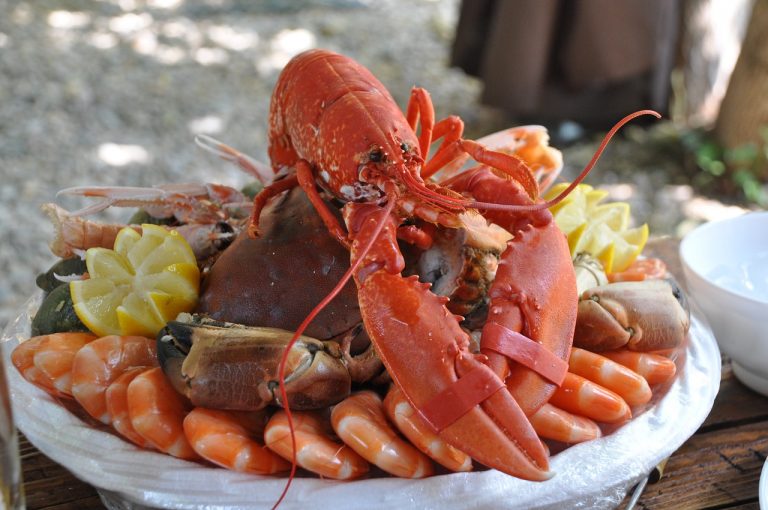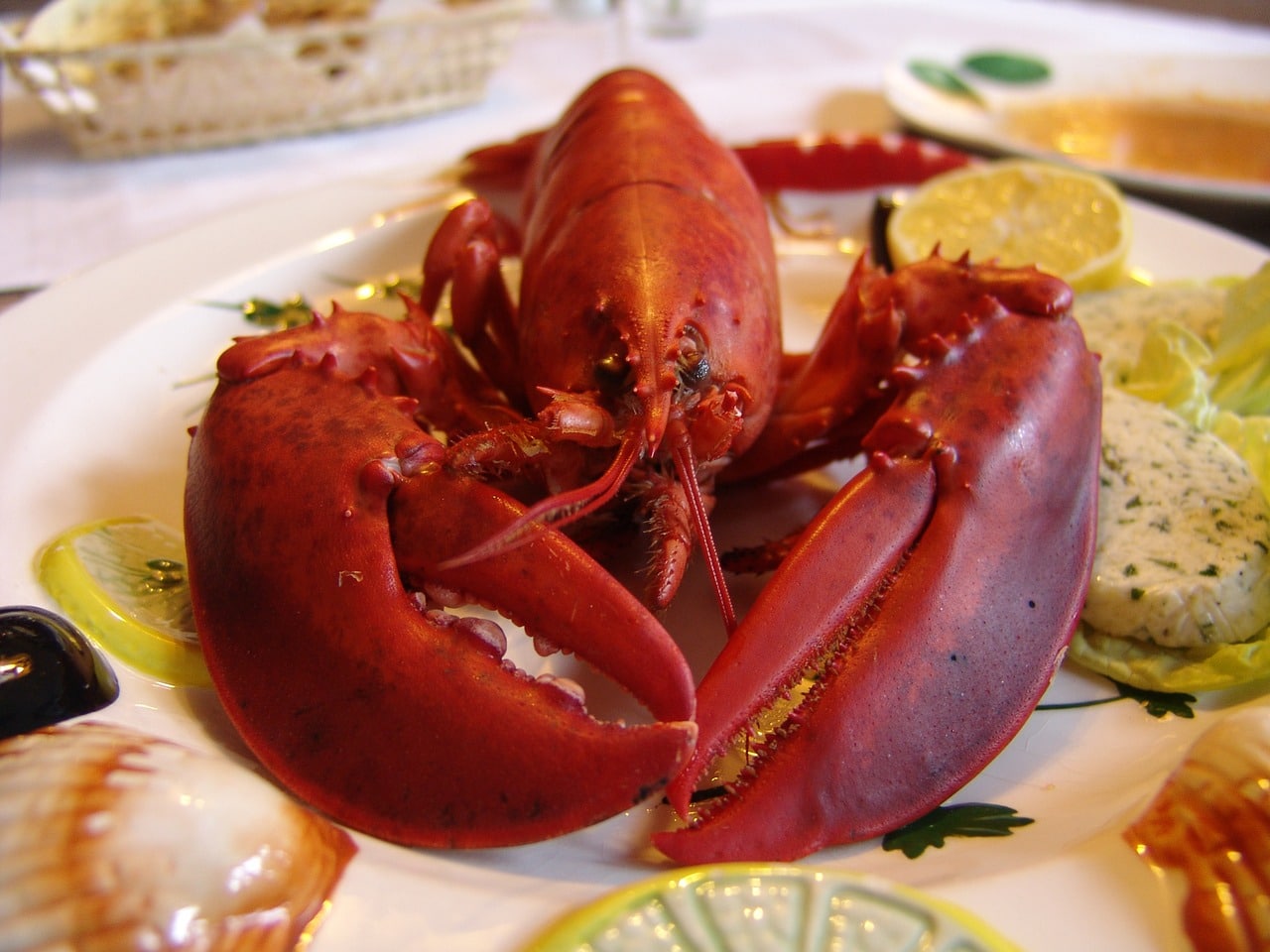
À well prepared lobster is surely one of the delights to come out of the sea. Thermidor, à l’Americain, bisque or simply served cold with hollandaise or even on a crisp salad, the humble lobster with its beautiful delicate meat is a treat. In the UK the lobster market is worth in the region of 10 million British Pounds per year with a mixture of home-produced, exported and imported lobster.
Nearly 80% of the lobster caught along the Yorkshire coast, in north east England, is exported to Europe – or it was before Brexit (the agreement for the UK to leave the European Union). Much of the imported lobster comes from the USA but if it is imported live it is subject to some quite strict rules. Namely that the live lobster must be kept at least one mile from the sea and not released under any circumstances. There is a fear that the imported species could overwhelm the natives.

The lobster is, however, under threat of being saved! Traditionally, lobsters are cooked by boiling, often with the live lobster being placed into a pan of boiling water. The dark shell turns colour to a pinky-red which is caused by the cooking process breaking down a protein in the shell. But now there is a move in the UK to ban the boiling of live lobsters under a law entitled the Animal Welfare (Sentience) Bill. Lobsters and other invertebrates, such as crabs, will be classed as sentient beings, which means they are capable of feeling pain. Other countries including Norway, Switzerland and New Zealand already have similar laws in place.
Many chefs are saying that they have not boiled lobsters alive for some years, so why is it considered the preferred method? People argue that it is to do with freshness. Lobster flesh naturally contains some harmful bacteria which quickly multiply once the animal is dead so keeping it alive as long as possible is considered favourable. We have all seen the lobster tank in the centre of the restaurant and the diner who gets to choose their dinner, often with the lights dimmed and some awful music playing.
Choosing a lobster from a tank would certainly not be my chosen way – the animals are often in tight, cramped space with little room to move and their quality quickly deteriorates. Lobsters have even been known to be cannibalistic! For absolute freshness have a daily delivery of live and active lobsters and what comes next is important.
The general consensus of opinion is that the lobster should be killed humanely before being boiled. Some kitchens use a blast freezer to quickly desensitise them and eventually kill them. Freezing also helps with destroying some of the harmful bacteria that is present in the flesh, in very much the same way as tuna is frozen before being used for sashimi.
Others chill them and then stab them with a knife to the back of the head – a method I have used myself – or, just stabbing them, which seems the least humane. Some years ago while working in a kitchen in a small restaurant we were asked by a customer to cut the live lobster in half and grill it!! There is talk of a stun gun but I believe the price will make this prohibitive for most kitchens.
Whether or not lobsters feel pain will remain the subject of discussion and debate. When I first heard about the proposed new law I thought it was just another sign that we had all gone soft. But what should be clear to all of us, particularly in the hospitality industry, is that animal welfare is of the utmost importance. Consumers are more aware and will readily ask questions and demand information concerning where their food has come from. We all know that traceability plays a vital role in our supply chain and part of that includes the production of our meat and fish.